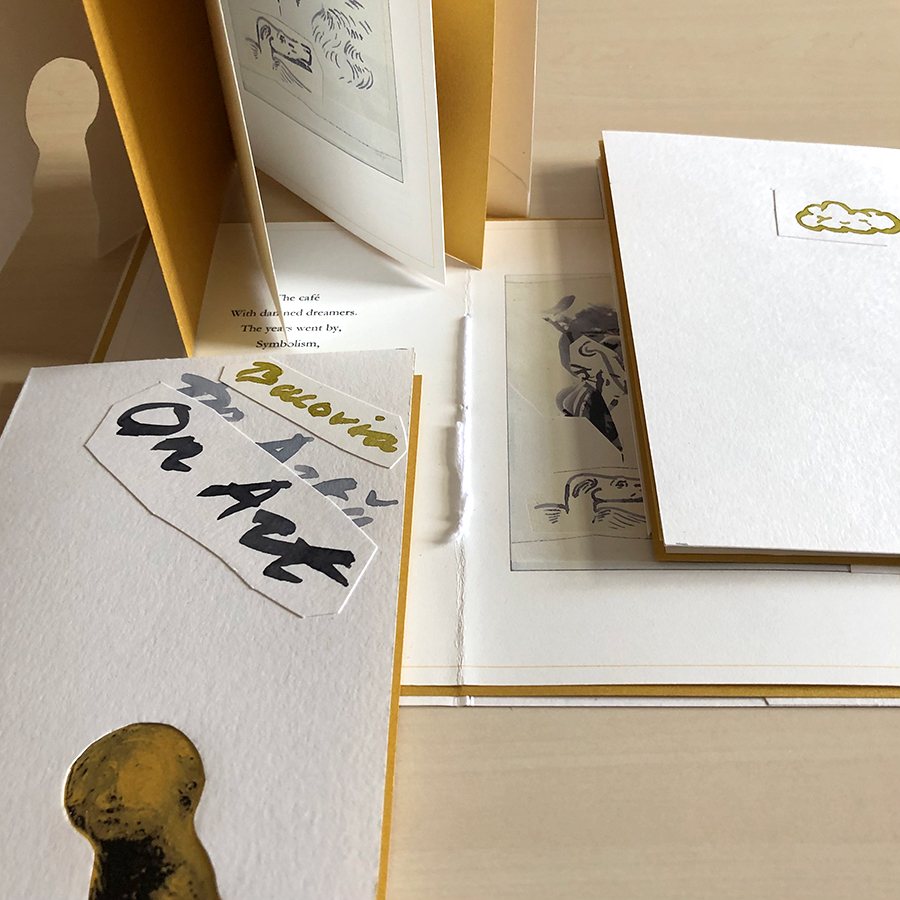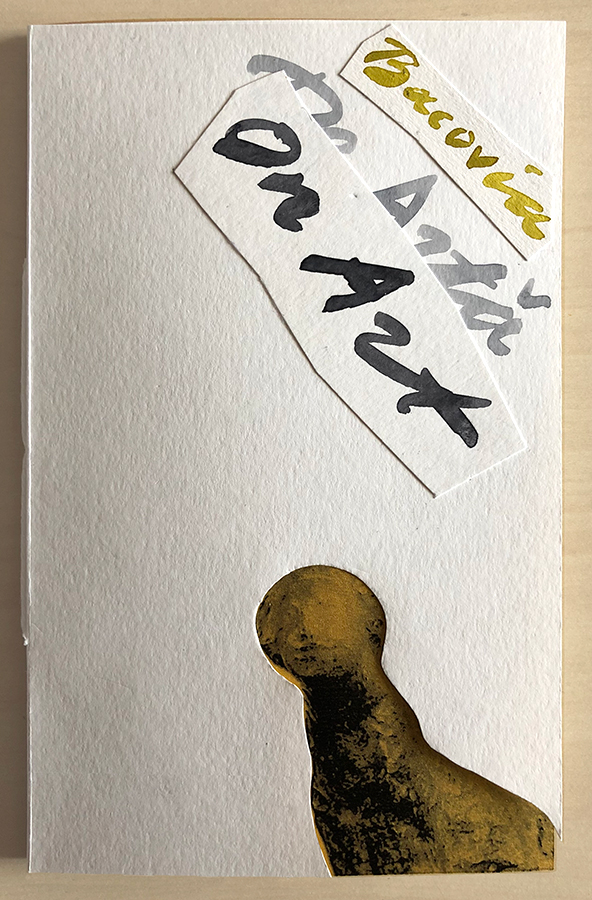
Poet: George Bacovia
Publisher: Sea Urchin, Rotterdam
Year: 2024
Size: 180 x 111 x 3 mm
Pages: 4 pamphlet stitched pages
Language: English
Translation, artwork & design: Ben Schot
Depicted sculpture by Dimitrie Paciurea
Hand made edition of 15
 Gheorghe Vasiliu was a Romanian poet who named himself George Bacovia after his native town Bacău. Bacovia was born there in 1881 and distinguished himself as a talented draughtsman, violinist and poet while being educated at the Prince Ferdinand Gymnasium, now located at George Bacovia Street in Bacău. After having moved to Bucharest to study Law in 1903, Bacovia made the acquaintance of poet and critic Alexandru Macedonski, at the time the spearhead of Francophile Symbolism in Romania. Bacovia read his famous poem Plumb (= Lead) at Macedonski’s salon that same year and made a huge impression on his host and his literary acolytes. Bacovia’s star was rising in Bucharest, but suffering from bad health and depressions he had to return to Bacău and only finished his Law studies at the University of Iaşi in 1911, when he was already 30 years old. Instead of becoming a lawyer, Bacovia held various jobs at literary reviews, offices, schools and ministries, from which he more than once had to resign because of his failing health and depressions. Bacovia was committed to sanitoria several times during his lifetime. In 1933 Bacovia and his wife permanently settled in Bucharest, where he died in 1957.
Gheorghe Vasiliu was a Romanian poet who named himself George Bacovia after his native town Bacău. Bacovia was born there in 1881 and distinguished himself as a talented draughtsman, violinist and poet while being educated at the Prince Ferdinand Gymnasium, now located at George Bacovia Street in Bacău. After having moved to Bucharest to study Law in 1903, Bacovia made the acquaintance of poet and critic Alexandru Macedonski, at the time the spearhead of Francophile Symbolism in Romania. Bacovia read his famous poem Plumb (= Lead) at Macedonski’s salon that same year and made a huge impression on his host and his literary acolytes. Bacovia’s star was rising in Bucharest, but suffering from bad health and depressions he had to return to Bacău and only finished his Law studies at the University of Iaşi in 1911, when he was already 30 years old. Instead of becoming a lawyer, Bacovia held various jobs at literary reviews, offices, schools and ministries, from which he more than once had to resign because of his failing health and depressions. Bacovia was committed to sanitoria several times during his lifetime. In 1933 Bacovia and his wife permanently settled in Bucharest, where he died in 1957.
Bacovia’s poem De Artă appeared in his compilation Stanţe burgheze in 1946. Back in Bucharest after having retreated to Bacău for more than twenty years and his country under an austere communist regime since 1945, the poet recollects in De Artă the days when he was part of the capital’s inner circle of Romanian Symbolists. In condensed lines, often no longer than a single word, Bacovia vividly and lovingly sketches the atmosphere of decadence of those days. De Artă has been translated into English and illustrated by Ben Schot, who published the poem as a hand made Sea Urchin edition of 15 copies. On the gold flyleaf of the edition one of the chimeras has been printed that Romanian Symbolist artist Dimitrie Paciurea produced in the 1920s. Dream on!


